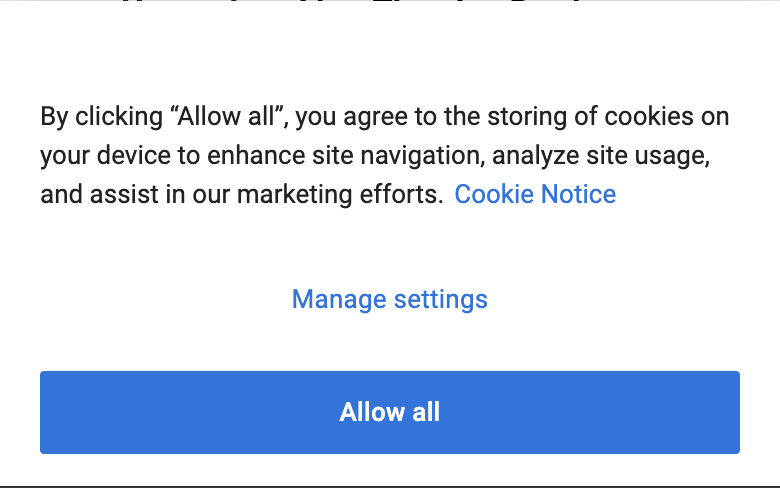How To Evolve Analytics Measurement & Attribution
One particular issue has been causing me more headaches than anything else over the past several years including forecasting SEO. The gradual decline of 3rd party cookies has been especially painful. I don’t think I’m alone in this regard as the majority of websites today use Google Analytics 4 among other tools. While GA3 (Universal Google Analytics) had it’s flaws, it was legitimately a good web analytics platform especially since it was free. The impact of 3rd party cookie degradation is not limited to just GA4 however, which I’ll attempt to explain below.

The Rise of GDPR
The General Data Protection Regulation (GDPR) was developed for the European Union and was enacted in 2018. This was developed under the guise of consumer data privacy. I won’t get into the whole history of why and how the EU got there as that’s beyond the scope of this blog but the impact of this has had far-reaching impact for businesses and marketers globally.
California among other locations followed suit in 2020 with their version of GDPR which is called California Consumer Privacy Act (CCPA). There’s probably a number of other laws out there that I have never heard of. Today’s data laws are a patchwork to navigate not unlike insurance policies or gun laws in the United States. This is just my personal opinion but I think it’s ridiculous to expect small businesses to know all the nuances for data privacy as this places unreasonable burden on people who are often struggling just to stay in business.
Cookie Banners
I’ll openly say that cookie banners are the worst thing to happen to internet user experience since autostart music on websites. But that’s the world we live in today. What do these cookie banners do? The basic gist of these banners is a “cover your ass” mechanism in regards to GDPR, CCPA, etc… Those laws cover more than just website cookies but this is a big part of it.

What Happens When A User Opts Out Of Cookies?
There are several ways to opt out of cookies. One way to do this is to set your web browser to the most strict privacy settings which blocks all cookies. Another way to opt out of cookies is to decline cookies on pop-up banners if the site has one. Depending on how you have implemented cookie management on your website you can inadvertently remove all ability to track data beyond what any of the privacy acts in that region may require. I don’t know of any business that can thrive under that scenario but it happens. I’ve personally seen poorly-researched implementations of Shopify privacy plugins and other 3rd party cookie banner tools that take the heaviest-handed approach to data. There’s plenty of downstream impact when that happens from a major loss of GA4 data, inability to attribute Shopify sales to any marketing channel, huge decreases in conversions sent to Facebook pixel and the list goes on.
In a best-case scenario, the degradation of 3rd party cookies is probably about a 10% loss of attribution by some estimates including my own experience. 10% is not a huge number but that number will continue to increase. So what do you do?
Client-Side vs Server-Side Events
The default method of collecting web analytics data today is either through hard-coding pixels directly into a website template or by using client-side tag management, often Google Tag Manager. This has always come with major limitations due to browser privacy settings, device settings like iOS, and other issues since client side means the data needs to load after a browser event has occurred. Client side events do not come directly from the source.
I’m no engineer nor a data scientist but server side events can capture a higher percentage of data than client-side events can since these events are generated as soon as the server is called. Server-side events fall under 1st party data from my understanding. Whereas client side events are impacted by browser privacy settings and cookie banner opt-outs. So if you’re setting up your analytics and tagging through server side events then you can capture a more holistic view of data.
One easy way to see the impact of privacy settings on the ability to track web analytics is to preview Google Tag Manager on Chrome while you lock down all of the settings. None of your tags will fire. GA4 won’t even know that you existed. By you, I mean the anonymous User ID that is generated by Google. Now imagine that you wiped out 40% of your data through a heavy-handed cookie management solution. That’s what you’re losing. Plus if you use GTM to set up Google Ads conversions then it will look like your ads got worse overnight. If you deploy Facebook pixel through GTM or hard-coding then the same thing.
Potential Solutions
I started using Amplitude for a web analytics project earlier in the year. Unlike GA4, the Amplitude implementation used server-side SDK events which helps for capturing a more holistic view of data and retention. The downside is that it can cost a lot of money which can be cost-prohibitive for some businesses. The platform is pretty powerful however and allows for much more robust reporting than GA4 does. It also requires a lot more upfront setup but for businesses willing to invest in a good web analytics platform it’s worth it.
Ingest Labs (formerly Magic Pixel) is another vendor that I’ve had discussions with over the past year. Their platform has impressed me, as I would describe it in-part has an evolved form of what Google Tag Manager should be. Their SAAS platform was built with data privacy regulations in-mind while offering marketers a solution that doesn’t compromise their ability to do their job. Rather than have essential web data be compromised due to getting lumped into 3rd party cookies, Ingest Labs allows you to collect 1st party data from your website and has integrations with all of the major website and ad tech platforms. There is also real-time monitoring and alerts when there are data anomalies which can allow you to troubleshoot quicker if there is an issue with data collection. As a long-time GTM user, I have to say that this feature is a game-changer because it’s nearly impossible to know exactly how much data that GTM is unable to capture on any given day.
Evolving Our KPIs & ROI Attribution
Anyone who has spent a lot of time managing display retargeting ads and Facebook Ads knows that those channels are almost never accurately represented in traditional click-based attribution analytics platforms such as Google Analytics. Channels such as email, organic and paid search will always look more effective when using the traditional methods of click-based attribution. The problem with this is approach is that it doesn’t take into account the impact of multiple impressions on a customer buyer journey. No one measures billboard and TV commercial impressions by clicks so why social media channels and display retargeting ads?
I figured this out years ago when I was managing all digital marketing channels at Backroads. When I made some changes to our marketing mix, specifically using Facebook Custom Audience data to align with our direct mail calendar in addition to changing our display retargeting strategy, sales started to skyrocket overnight and that lasted for the better part of two years. There were no other significant changes to marketing nor operations side of the business during that time so it was clear that these campaigns drove a lot of incremental sales for the company even if we couldn’t quantify it through traditional web analytics. Things were working so I was never questioned about why I continued to spend on those campaigns.
Incrementality testing is type of A/B testing for marketing campaigns that involves test groups vs control groups. The goal is not to measure dollar for dollar attribution (that idea has always been flawed anyway) but to measure the incremental lift that a campaign or channel has on sales. While Facebook or Instagram Ads may look inefficient in Google Analytics compared to other channels, that may not be entirely accurate if you conduct incrementality testing. Conversely, all of that Google Ads brand campaign spend might not be delivering nearly as much incremental sales as you might think due to cannibalizing SEO brand traffic and the fact that brand search has a lot of bottom funnel intent.
If testing shows that these channels consistently deliver incremental value then executives should stop trying to measure dollar for dollar via clicks because that’s just going to prevent your company growing. Multi-touch attribution has always been flawed and getting worse by the day due to privacy laws. Gain an understanding for what mix of channels and campaigns drive incremental value then invest in them. Accountants are not growth marketers and nor are marketers accountants. When marketers and CFOs are aligned that’s when a business will grow.
